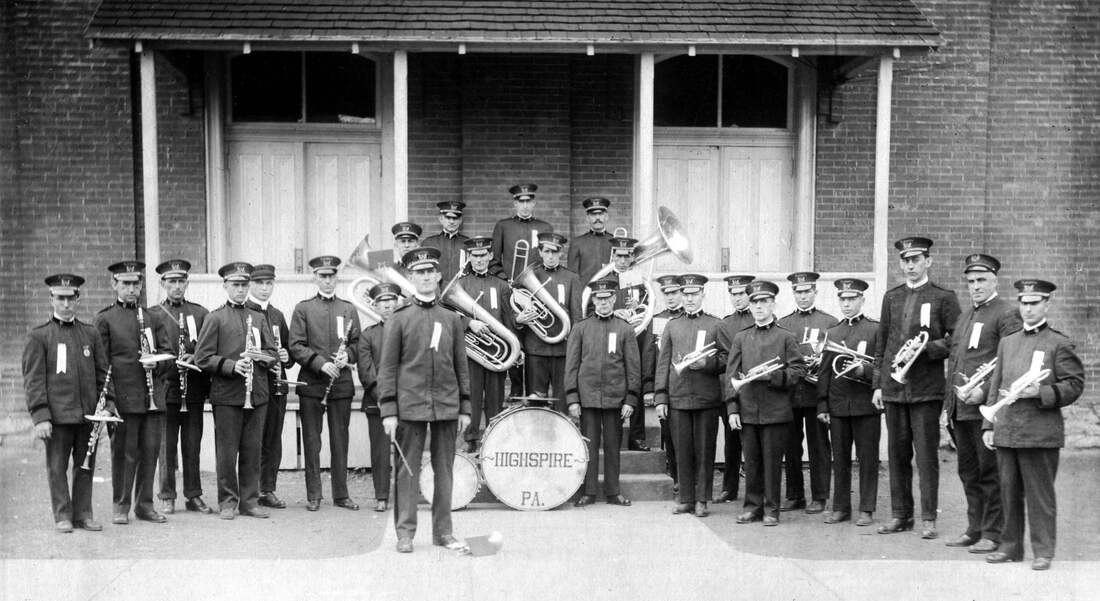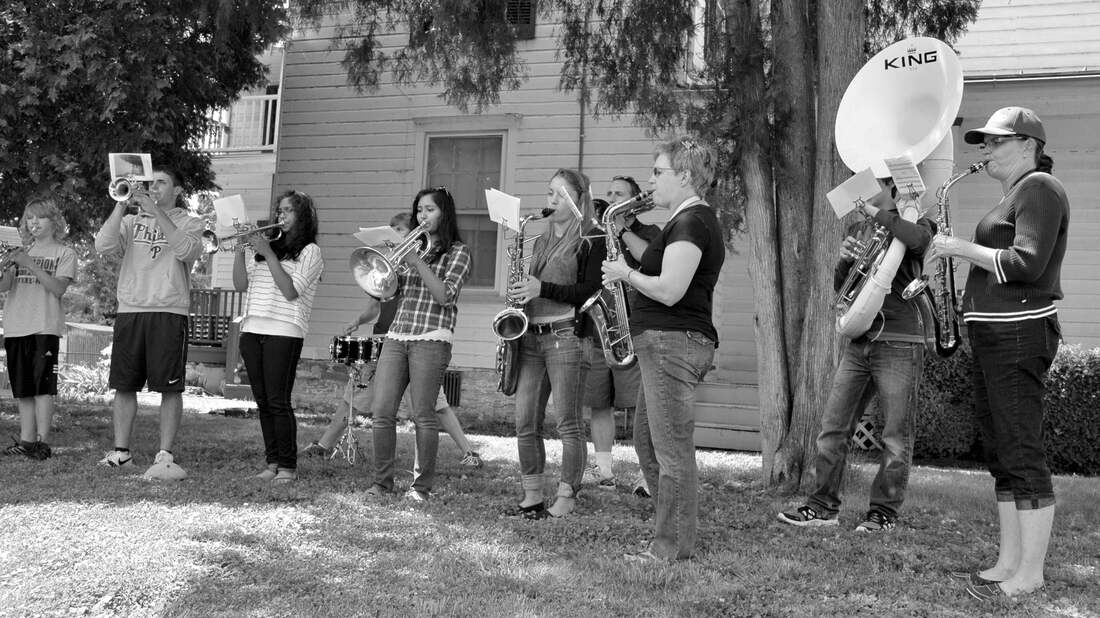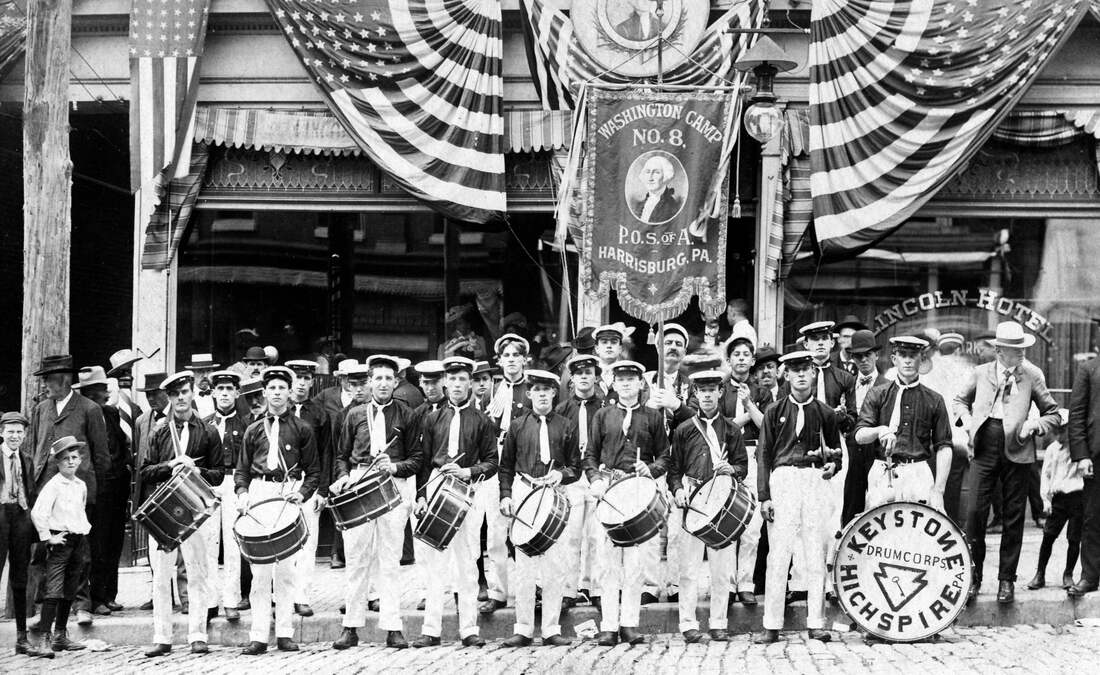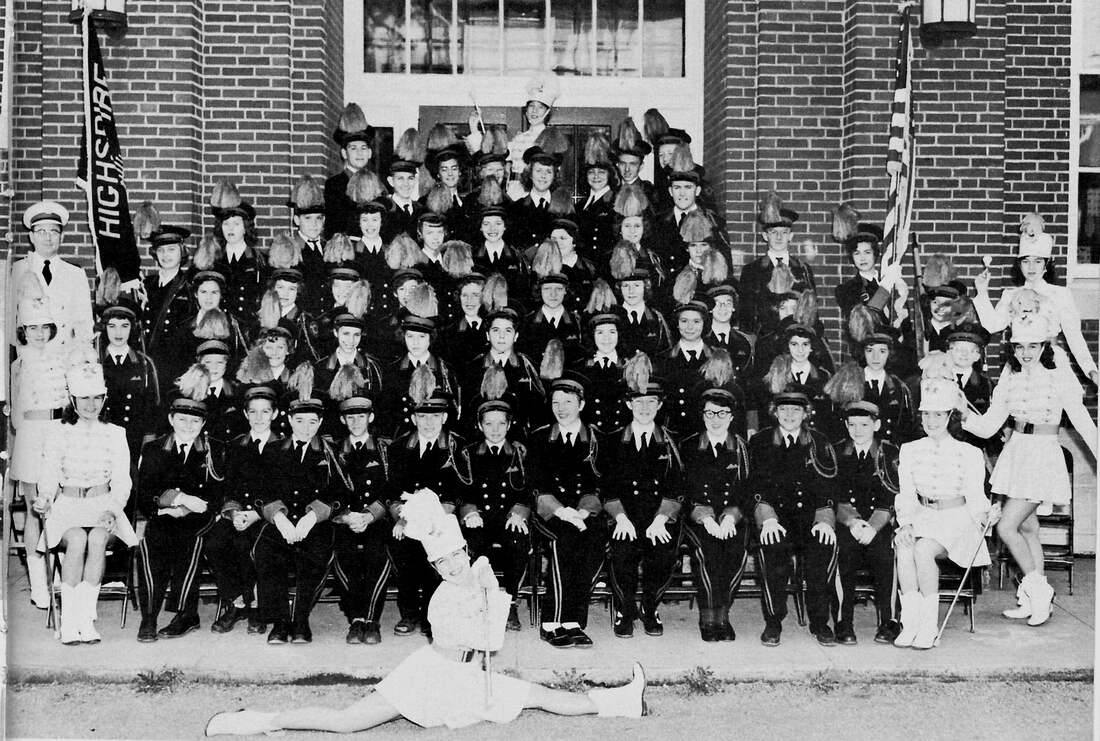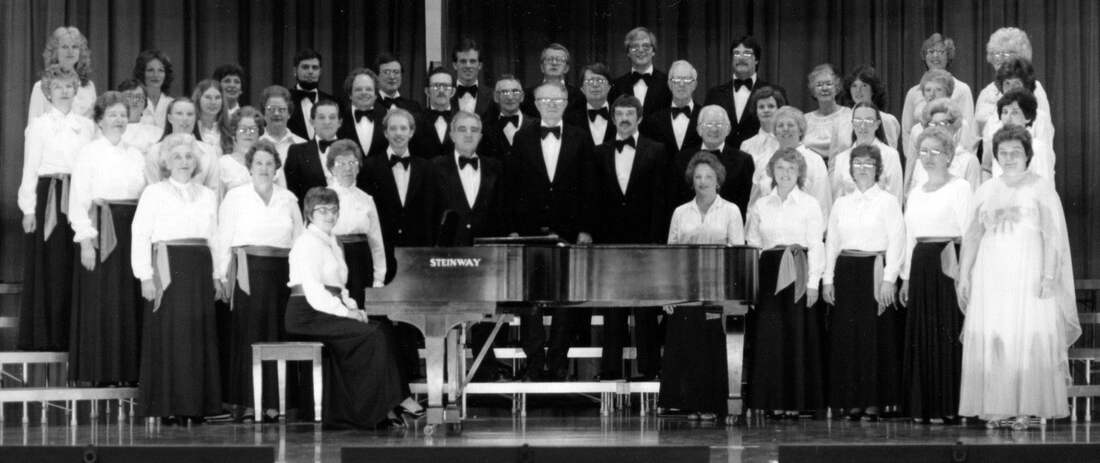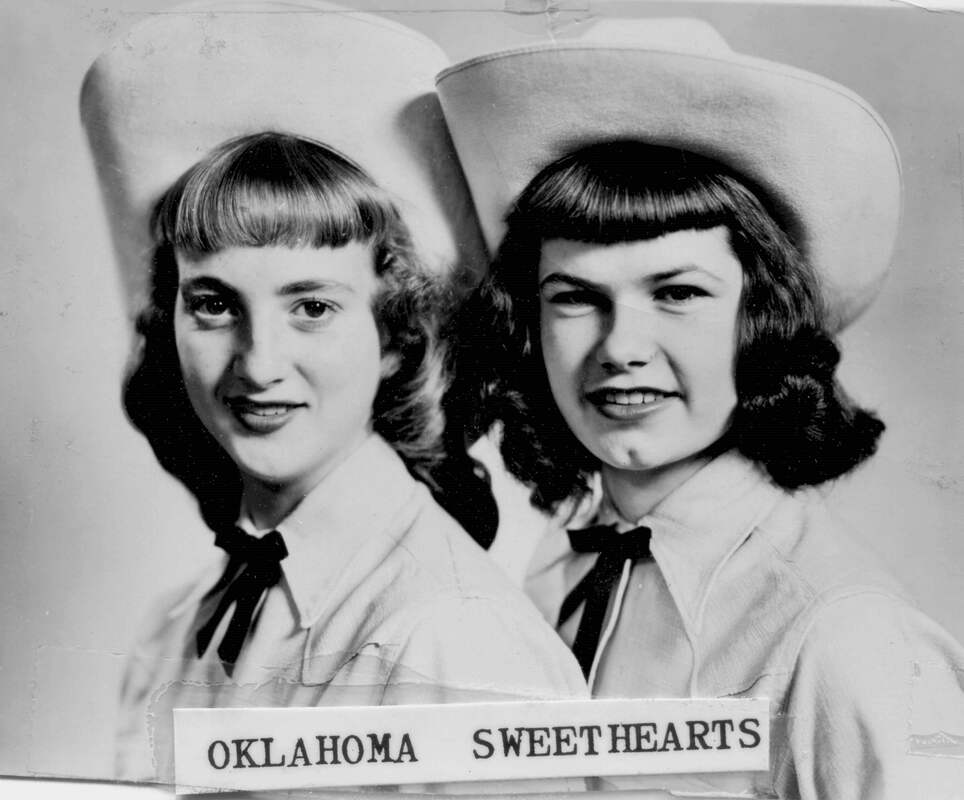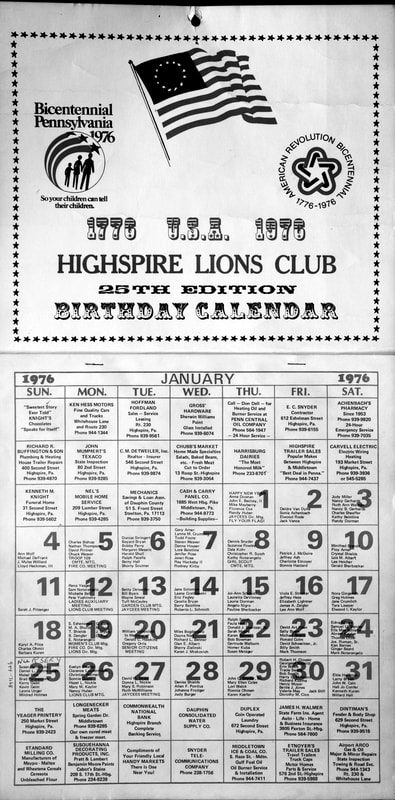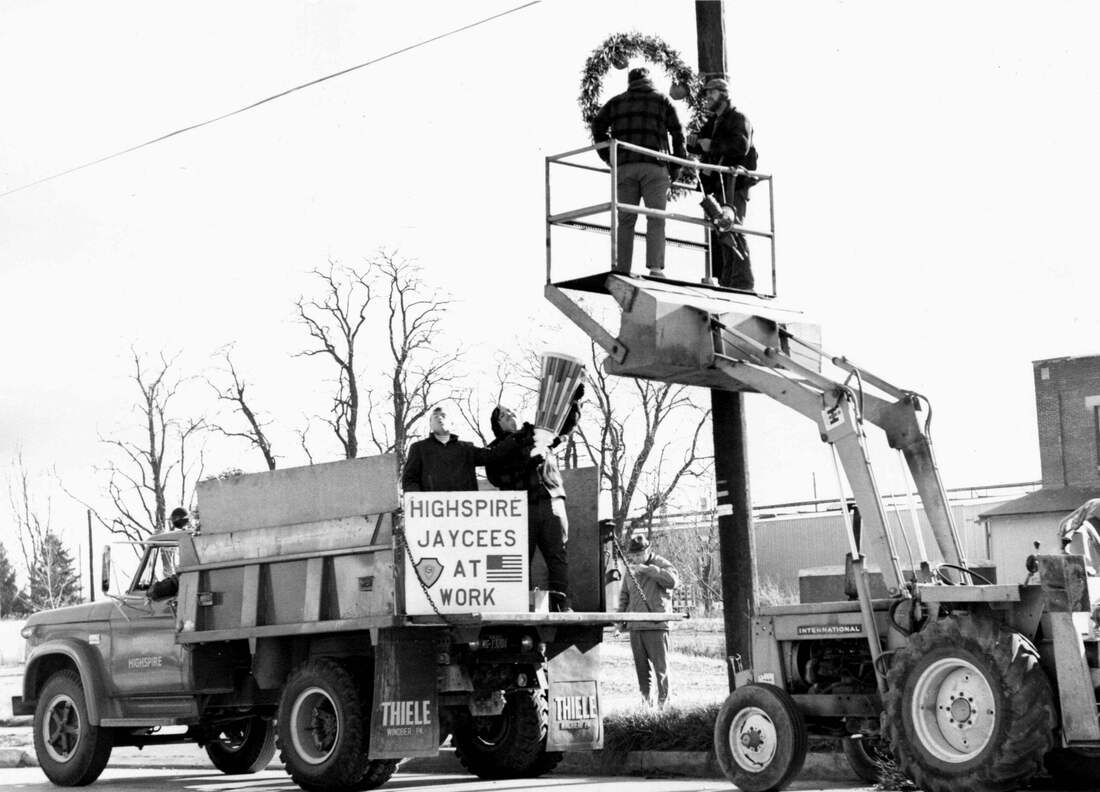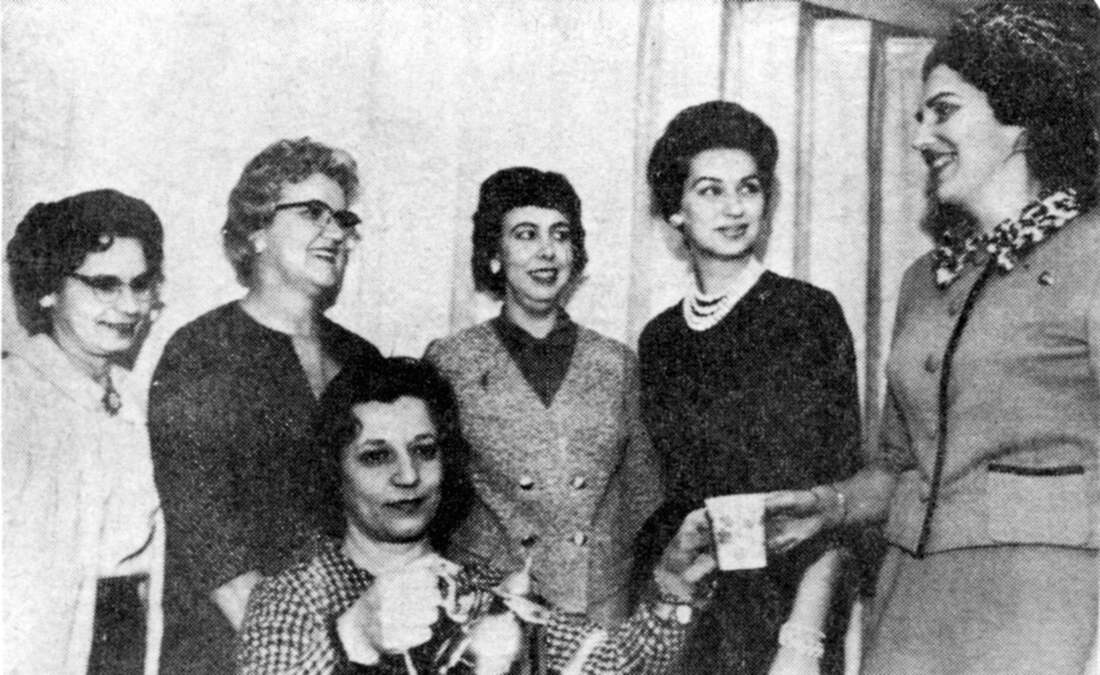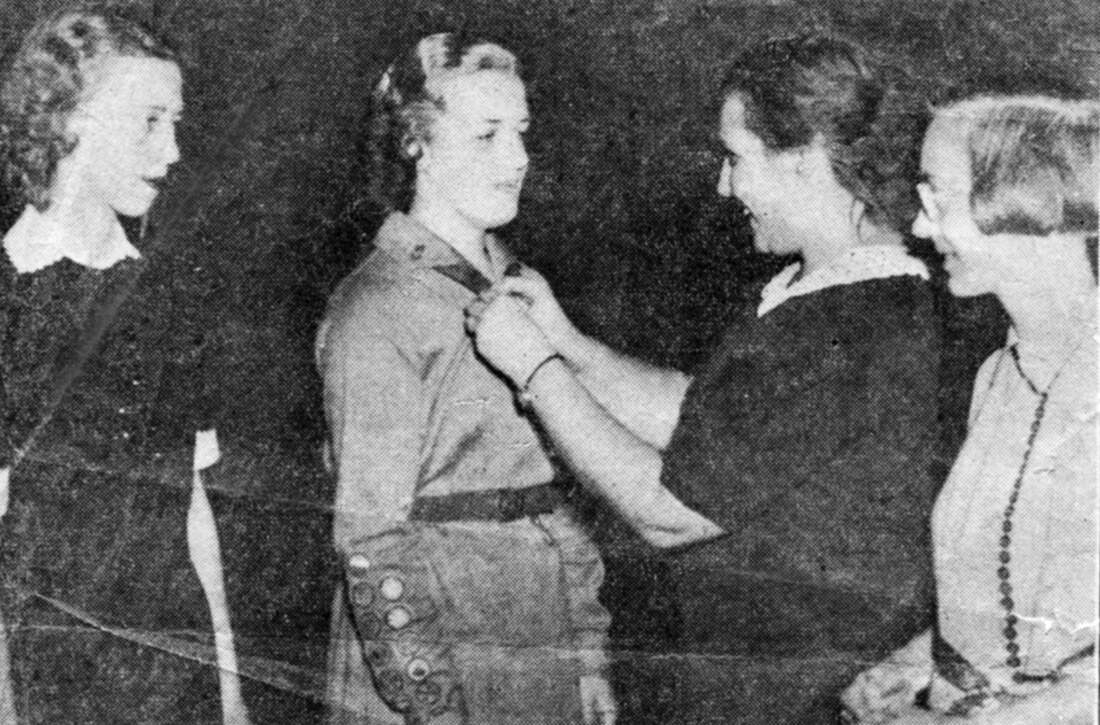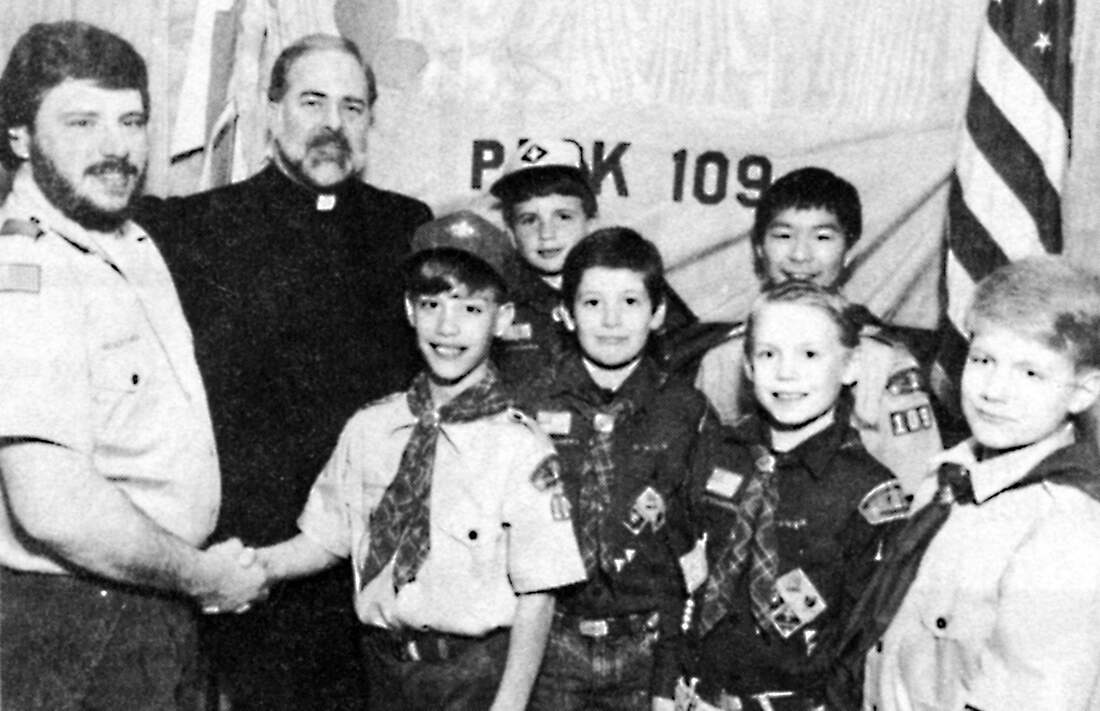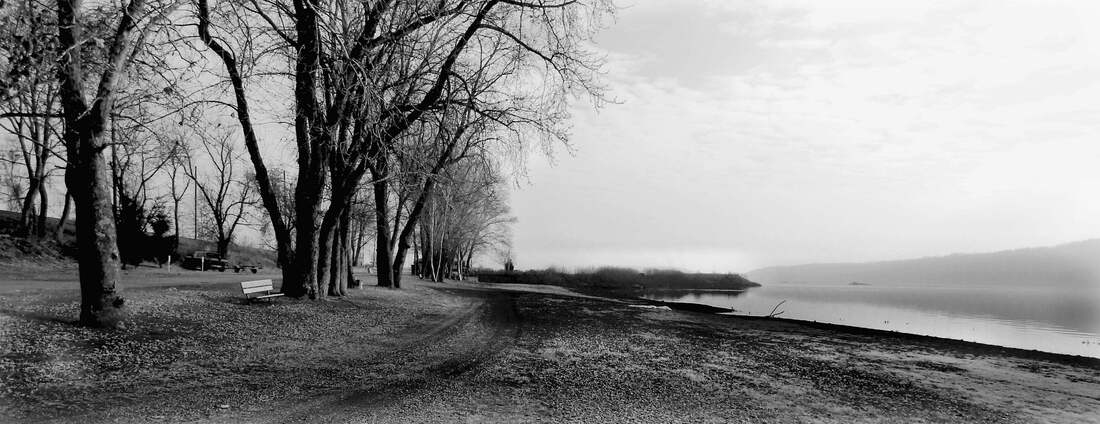Civic and Cultural Organizations
Musical Groups & Artists
Prior to the 20th century all musical entertainment was live performances. Highspire, like towns throughout America, would have had local musical artists and groups who performed in churches, concerts, dances, parades, sporting events and private homes. Unfortunately, like many other aspects of 19th century Highspire, very little information from that era survives today.
The earliest record we can find of a Highspire musical group is a June 15, 1872, article in the Harrisburg Telegraph about a Knights Templar parade. It lists a Highspire Band of 16 members led by E. Bombaugh. A few weeks later, on July 1, there was an announcement that the Highspire Band was planning “a grand picnic and clam bake in Stoner’s woods, half a mile east of Highspire (the eastern boundary of Highspire was Burd Run in 1872), on Tuesday next, July 4th, for the purpose of raising funds for the liquidation of the debt on their horns.” Several articles from the early 1870s refer to the Highspire Cornet Band, so this early Highspire band may have been a specialized ensemble.
References to a Highspire Band continue to appear in newspaper articles through the late 1800s and into the 1930s. In the first decade of the 20th century, the band leader was Clarence Shelley. An article in the Dec. 22, 1906, Harrisburg Telegraph tells of a party held in honor of his 37th birthday, during which he was given a gold medal for his “efficient services as director.” In 1914 there is a report that the Highspire Band consisted of 23 members. A 1915 article mentions the annual Highspire Band Festival at Kaufman’s Park (northwest corner of Second and Paxton streets). A 1917 article mentions a concert in Daugherty’s Hall (northeast corner of Commerce Street and Lusk Avenue) by the 26-piece Highspire Band directed by Irwin Longnecker. In the late 1920s and early 1930s the Highspire Band was under the direction of J.C. Painter. In 1932 the band gave weekly concerts during the summer months, alternating between Highspire and Steelton. An 1933 article about a concert at the engine house lists Charles Moser as the band director.
References to a Highspire Band continue to appear in newspaper articles through the late 1800s and into the 1930s. In the first decade of the 20th century, the band leader was Clarence Shelley. An article in the Dec. 22, 1906, Harrisburg Telegraph tells of a party held in honor of his 37th birthday, during which he was given a gold medal for his “efficient services as director.” In 1914 there is a report that the Highspire Band consisted of 23 members. A 1915 article mentions the annual Highspire Band Festival at Kaufman’s Park (northwest corner of Second and Paxton streets). A 1917 article mentions a concert in Daugherty’s Hall (northeast corner of Commerce Street and Lusk Avenue) by the 26-piece Highspire Band directed by Irwin Longnecker. In the late 1920s and early 1930s the Highspire Band was under the direction of J.C. Painter. In 1932 the band gave weekly concerts during the summer months, alternating between Highspire and Steelton. An 1933 article about a concert at the engine house lists Charles Moser as the band director.
The Highspire Band stands in front of the original, pre-1915 Roop Street entrance to the Highspire School. The Highspire Band was organized in the early 1870s and disbanded in the late 1930s.
The last newspaper report on the Highspire Band was a 1935 announcement of a rehearsal in the Band Hall (Daugherty’s Hall). One older resident recalls hearing music coming from the Band Hall as late as 1938 or 1939. The Highspire Band seems to have disbanded by 1940. That could be because the school band was started about that time, or because the band hall was razed, or both. The late 20th century would see the revival of a Highspire band. The current Highspire Community Band under the direction of Gail Romanofsky performs at community events and special functions.
The local band tradition lives on with the Highspire Community Band. This group, led by Gail Romanofsky, performs for special occasions, and the personnel vary according to the event. This ensemble performed during the 2012 dedication of a plaque honoring former Highspire Supervising Principal LaRue Derr and wife Elsie at the Wilson House. Front row left to right: Noah Hawkins, Will Hawkins, Afrah Howlander, Howlander Nasharah, Shanna Hawkins, Jill Hawkins, Isaac Hawkins and Karyl Hawkins. Back row left to right: Weston Hawkins (drums), Pat Hawkins (trombone). (Photo by Robert Keesey)
In June 1899 the Highspire Keystone Drum Corps was organized. It performed until at least November 1918, when it was mentioned in a newspaper article regarding a Highspire peace celebration. The group, which featured fifes and drums, was led by Edward Ruth. It was a popular parade unit and traveled widely around South Central Pennsylvania. A 1906 article mentions the Highspire Band and the Drum Corps participating in a “smoker” at the Band Hall in honor of a visit by Clarence Shelley’s brother Charles, “the champion trombone player of the West.” During this same period Highspire also had a Junior Drum Corps for children.
The Highspire Keystone Drum Corps was organized in 1899 and the marching band performed for about two decades. There was also a Junior Drum Corps for children in the same era.
In June 1934 Miss Catherine Heckman, an honor graduate of the Conservatory of Music at Lebanon Valley College, was hired as a music instructor in the Highspire High School. She would soon organize a high school band. In the fall of 1935 the Highspire Parent Teacher Association held a fair to raise money for instruments and uniforms, and by the following year the band was established. The new band’s first appearance outside Highspire was on May 31, 1937, in a Memorial Day program at Mount Joy. The band tied for second place and won half the $75.00 second-place prize.
Catherine Heckman married Supervising Principal Harvey Nitrauer in the summer of 1940 and resigned her teaching position before the start of the 1941-42 school year. She was succeeded as music director by Earl Caton; he was at Highspire four years, until 1945. He was succeeded by Lee Keener, 1946; Evelyn Heister, 1947-48; Robert Zimmerman, 1949-50; and Jack Snavely, 1951. Herbert Bollinger came to Highspire in the fall of 1951. He continued as the band director for the Steelton-Highspire High School after the jointure was implemented. Janet Straw is listed as student directress in the 1946 and 1947 yearbooks.
The Highspire School Band was started in 1937 by Catherine Heckman. This picture is from the 1955 Highspire Yearbook. The director was Herbert Bollinger.
Highspire High School had a school chorus at least as early as the 1920s. A 1928 newspaper article identifies Miss Elizabeth Eisenhauer as the choral director. However, Catherine Heckman Nitrauer took the choral program to a new level. In 1941, the Highspire High School mixed chorus placed second in the State Forensic and Music League Contest in New Castle.
Generations of choir directors and accompanists have enriched worship services in our local churches. Highspire residents who served in those positions for significant periods include Janet Straw, who directed the Senior Choir at the United Methodist Church for many years in the later 20th century. Her mother, May Straw, directed the Youth Choir. L.C. Barnet was the choir director in the early 1900s, and Joseph Deibler was organist. When illness sidelined the accompanist at the Church of God in 1948, 13-year-old David Marks stepped in and served in that position until he was drafted into the Army in 1956. He also became the first organist when the church acquired an organ in 1949. Katherine Sides Hess succeeded David and also served as the Junior Choir director for many years. William White was the choir director at St. Peter’s Lutheran Church in the 1920s and 1930s. Kay Baker Sutch served as organist and director of the Youth Choir from 1962 to 1987. During most of her tenure, William Wilson served as the Adult Choir director. The current choir director, Steven Strauss, has served in that capacity since 1984. He has also directed the Cherub Choir since 1974, and the Bell Choir since 1984.
In addition to local church choirs, there have been organized choral groups at various times in Highspire’s history. In the early 20th century there was a Highspire Choral Society directed by G.W. Coover. A brief note in the Dec. 4, 1911, Harrisburg Telegraph announced the Society’s winter concert on Dec. 7. In the early 1930s the Highspire Parent-Teacher Association (PTA) had a chorus of about 40 voices directed by James Madison. In January 1933, they performed Handle’s “Messiah” at the United Brethren Church. They also performed at other venues in the area, such as a February 1933 concert for the Hummelstown PTA. In the late 1930s and early 1940s the PTA also had an orchestra.
During the United States’ Bicentennial, the Highspire Singers were organized to help celebrate the event. The chorus under the direction of Janet Straw performed for a number of years. Its biannual concerts were held in the Highspire School auditorium, and they performed at community Thanksgiving services. The Highspire Bicentennial Committee is planning sponsored several choral concerts from Dec. 28, 2013, to Dec. 29, 2014. The chorus performed under the direction of Stephen Strauss.
Generations of choir directors and accompanists have enriched worship services in our local churches. Highspire residents who served in those positions for significant periods include Janet Straw, who directed the Senior Choir at the United Methodist Church for many years in the later 20th century. Her mother, May Straw, directed the Youth Choir. L.C. Barnet was the choir director in the early 1900s, and Joseph Deibler was organist. When illness sidelined the accompanist at the Church of God in 1948, 13-year-old David Marks stepped in and served in that position until he was drafted into the Army in 1956. He also became the first organist when the church acquired an organ in 1949. Katherine Sides Hess succeeded David and also served as the Junior Choir director for many years. William White was the choir director at St. Peter’s Lutheran Church in the 1920s and 1930s. Kay Baker Sutch served as organist and director of the Youth Choir from 1962 to 1987. During most of her tenure, William Wilson served as the Adult Choir director. The current choir director, Steven Strauss, has served in that capacity since 1984. He has also directed the Cherub Choir since 1974, and the Bell Choir since 1984.
In addition to local church choirs, there have been organized choral groups at various times in Highspire’s history. In the early 20th century there was a Highspire Choral Society directed by G.W. Coover. A brief note in the Dec. 4, 1911, Harrisburg Telegraph announced the Society’s winter concert on Dec. 7. In the early 1930s the Highspire Parent-Teacher Association (PTA) had a chorus of about 40 voices directed by James Madison. In January 1933, they performed Handle’s “Messiah” at the United Brethren Church. They also performed at other venues in the area, such as a February 1933 concert for the Hummelstown PTA. In the late 1930s and early 1940s the PTA also had an orchestra.
During the United States’ Bicentennial, the Highspire Singers were organized to help celebrate the event. The chorus under the direction of Janet Straw performed for a number of years. Its biannual concerts were held in the Highspire School auditorium, and they performed at community Thanksgiving services. The Highspire Bicentennial Committee is planning sponsored several choral concerts from Dec. 28, 2013, to Dec. 29, 2014. The chorus performed under the direction of Stephen Strauss.
The Highspire Singers were formed to help celebrate the borough’s bicentennial in 1976. Their concerts were well received and they continued to perform into the early 1980s. (Photo courtesy of D. Ray Huckaby and Doris Gallagher Rehrer)
In addition to musical instruction in the public schools, private music instruction has been offered in the borough going back to at least the early 20th century. L. Clarence “L.C.” Barnet taught voice, piano and organ as early as the 1920s. He and wife Edna lived with his father-in-law, A.C. Hocker, in the large yellow-brick house on Lumber Street across from the intersection with Rosedale Avenue. Another early 20th century piano teacher was Edna Sheaffer Stimeling. She taught in her studio at 206 Market St. in the 1930s and 1940s. In the later 20th century Jane Albright Solomon taught voice and piano at her home at 168 Second St. She continues to teach voice to students from throughout Central Pennsylvania. Klock’s House of Music at 200 Second St/ provided instruction in drums, brass, reed instruments and guitar. Louise Klock, who majored in music at West Chester State Teachers College, taught voice and piano at the store, and was the choir director at St. Peter’s Lutheran Church.
Although not a music art per se, dance is normally performed to, and closely associated with music. The Ritchie School of Dance has been providing dance instruction in Highspire since 1972. It started in the basement of the Borough Building after the 1972 flood and moved to its current location at 679 Second St. shortly thereafter.
While Highspire has never had a nationally known artist in the world of music, there have been a number of professional musicians from Highspire. The previously mentioned L. Clarence Barnet was a graduate of the Conservatory of Music at Lebanon Valley College, and the Peabody Institute of Music in Baltimore. He studied organ at Peabody and served as choir director and organist at a number of Central Pennsylvania churches. Richard Chubb is another Highspire resident with a similar career. He was organist and choir director at several major Central Pennsylvania churches, including 18 years as organist at the Derry Presbyterian Church in Hershey. He also was a tenor soloist at St. Stephen’s Episcopal Church in Harrisburg. In addition to Janet Straw’s work with the Highspire Singers, she was an excellent pianist and served as accompanist for many recitals.
Highspire has been blessed with a number of fine vocal artists. Just as three generations of Albright men have served Highspire’s medical needs, three generations of Albright women have entertained Highspire residents with their musical talents. Jane Albright Solomon studied at the Eastman School of Music at the University of Rochester and at the Ornstein School of Music in Philadelphia. In addition to her teaching career, she performed as a soloist many times throughout the area, starting in high school. Her daughter Susan, who earned a Bachelor of Arts in Music from Gettysburg College and a Master of Music Degree in Vocal Performance from Catholic University, has performed as a soloist in Europe and Canada as well as with a number of regional production companies, such as the Harrisburg Civic Opera. She is on the faculty of Bucknell University, has a private studio in Harrisburg, and is the artistic director of the Harrisburg Singers. Jane’s mother, Jane Daugherty Albright, also performed as a soloist, sang in the St. Peter’s Lutheran Church choir, and founded the Junior Choir at St. Peter’s.
Dorothy Durborow Gross was another fine soprano and a contemporary of Mrs. Solomon. They attended the Ornstein School of Music together in the late 1940s. In addition to her contributions to the Highspire First Church of God Choirs, she performed frequently as a guest soloist throughout the area.
Dorothy’s older brother, Frank Maurice Durborow, played trombone with the popular Tommy Tucker Orchestra in the 1940s. After tiring of cross-country touring with that band, he returned to Central Pennsylvania and took a job as a highway inspector and materials engineer with the Pennsylvania Department of Transportation. He continued to play trombone regionally with bands such as the Tiny Wright Orchestra and the Hershey Park River Rats until the 1990s.
Robert Klock, owner of Klock’s House of Music, played drums with the Al Morrison Orchestra, a regional dance band in the 1960s. He also played drums with the Chicago-based Jimmy Palmer Band at the Steel Pier in Atlantic City during the summers of 1966 and 1967, and played on the same stage with the great drummer Gene Krupa. Son Jim majored in music at West Virginia University and played timpani with the Harrisburg Symphony Orchestra, and played drums with the Al Morrison Orchestra and other bands. His brother Richard played electric bass with the Polka Quads for many years in addition to playing trombone and drums with other bands. Robert’s wife, Louise, was a frequent guest soloist with various churches throughout the area.
Another multi-talented Highspire musician was Tom Herald. In his later years he was a well-known and much-in-demand Celtic harpist. He also was an accomplished pianist and organist, and performed for many weddings and celebrations. He also sang in church choirs and community choral groups for more than 50 years.
In 1940 Highspire residents Virgil Neal and Guy Millward, along with Richard Wright of Middletown, had a band called the Hawaiian Aces. In March 1940 they appeared on Major Bowes Amateur Hour, the very popular show on the CBS radio network. After World War II, Neal formed a country and western band called the Oklahoma Travelers. In the early 1950s he spotted two young Highspire girls, Jill Holmes and Thelma Motter, singing in a talent contest at Hoffer Park in Middletown. With their parents’ permission, he arranged for them to appear with his band and called them the Oklahoma Sweethearts. They sang with the band throughout the region, including performing at Highspire carnivals for four years in the mid-1950s. Jill continued singing until 1958; Thelma sang for a few years longer.
Although not a music art per se, dance is normally performed to, and closely associated with music. The Ritchie School of Dance has been providing dance instruction in Highspire since 1972. It started in the basement of the Borough Building after the 1972 flood and moved to its current location at 679 Second St. shortly thereafter.
While Highspire has never had a nationally known artist in the world of music, there have been a number of professional musicians from Highspire. The previously mentioned L. Clarence Barnet was a graduate of the Conservatory of Music at Lebanon Valley College, and the Peabody Institute of Music in Baltimore. He studied organ at Peabody and served as choir director and organist at a number of Central Pennsylvania churches. Richard Chubb is another Highspire resident with a similar career. He was organist and choir director at several major Central Pennsylvania churches, including 18 years as organist at the Derry Presbyterian Church in Hershey. He also was a tenor soloist at St. Stephen’s Episcopal Church in Harrisburg. In addition to Janet Straw’s work with the Highspire Singers, she was an excellent pianist and served as accompanist for many recitals.
Highspire has been blessed with a number of fine vocal artists. Just as three generations of Albright men have served Highspire’s medical needs, three generations of Albright women have entertained Highspire residents with their musical talents. Jane Albright Solomon studied at the Eastman School of Music at the University of Rochester and at the Ornstein School of Music in Philadelphia. In addition to her teaching career, she performed as a soloist many times throughout the area, starting in high school. Her daughter Susan, who earned a Bachelor of Arts in Music from Gettysburg College and a Master of Music Degree in Vocal Performance from Catholic University, has performed as a soloist in Europe and Canada as well as with a number of regional production companies, such as the Harrisburg Civic Opera. She is on the faculty of Bucknell University, has a private studio in Harrisburg, and is the artistic director of the Harrisburg Singers. Jane’s mother, Jane Daugherty Albright, also performed as a soloist, sang in the St. Peter’s Lutheran Church choir, and founded the Junior Choir at St. Peter’s.
Dorothy Durborow Gross was another fine soprano and a contemporary of Mrs. Solomon. They attended the Ornstein School of Music together in the late 1940s. In addition to her contributions to the Highspire First Church of God Choirs, she performed frequently as a guest soloist throughout the area.
Dorothy’s older brother, Frank Maurice Durborow, played trombone with the popular Tommy Tucker Orchestra in the 1940s. After tiring of cross-country touring with that band, he returned to Central Pennsylvania and took a job as a highway inspector and materials engineer with the Pennsylvania Department of Transportation. He continued to play trombone regionally with bands such as the Tiny Wright Orchestra and the Hershey Park River Rats until the 1990s.
Robert Klock, owner of Klock’s House of Music, played drums with the Al Morrison Orchestra, a regional dance band in the 1960s. He also played drums with the Chicago-based Jimmy Palmer Band at the Steel Pier in Atlantic City during the summers of 1966 and 1967, and played on the same stage with the great drummer Gene Krupa. Son Jim majored in music at West Virginia University and played timpani with the Harrisburg Symphony Orchestra, and played drums with the Al Morrison Orchestra and other bands. His brother Richard played electric bass with the Polka Quads for many years in addition to playing trombone and drums with other bands. Robert’s wife, Louise, was a frequent guest soloist with various churches throughout the area.
Another multi-talented Highspire musician was Tom Herald. In his later years he was a well-known and much-in-demand Celtic harpist. He also was an accomplished pianist and organist, and performed for many weddings and celebrations. He also sang in church choirs and community choral groups for more than 50 years.
In 1940 Highspire residents Virgil Neal and Guy Millward, along with Richard Wright of Middletown, had a band called the Hawaiian Aces. In March 1940 they appeared on Major Bowes Amateur Hour, the very popular show on the CBS radio network. After World War II, Neal formed a country and western band called the Oklahoma Travelers. In the early 1950s he spotted two young Highspire girls, Jill Holmes and Thelma Motter, singing in a talent contest at Hoffer Park in Middletown. With their parents’ permission, he arranged for them to appear with his band and called them the Oklahoma Sweethearts. They sang with the band throughout the region, including performing at Highspire carnivals for four years in the mid-1950s. Jill continued singing until 1958; Thelma sang for a few years longer.
The Oklahoma Sweethearts, Thelma Motter and Jill Holmes, started singing together as school crossing guards at Second and Paxton streets. In the 1950s they performed with the local country band the Oklahoma Travelers. The duo sang regularly at Highspire carnivals in the mid-1950s. (Photo courtesy of Robert Shields)
One notable Highspire visual artists was Myra Reeves. A 1920 graduate of Highspire High School, she studied at the Pennsylvania Museum and School of Industrial Art in Philadelphia. After graduating, she designed window displays for Bowman’s Department Store until she was laid off during the Great Depression. She later worked as a kindergarten teacher and for the Commonwealth of Pennsylvania. She also taught art and interior decorating at the Harrisburg YWCA. Myra worked primarily with water colors, and her paintings hang in many homes throughout the region.

Highspire’s most famous actor Donald “Don” Keefer. Born in Highspire in 1916, he was the son of Highspire butcher John Keefer and wife Edna. He played the son of Willy Loman's neighbor in the original Broadway cast of “Death of a Salesman” which opened in 1949, and for the next half-century he was a sought-after character actor on stage and in films. His film debut was in reprise of his stage role in the 1951 film “Death of a Salesman,” and his last role was in the 1997 film “Liar, Liar.” In between, he performed in dozens of films and 130 television shows including “Gunsmoke,” “The Virginian,” “Bonanza,” “Angel,” “The Real McCoys,” “The Andy Griffith Show,” “The Fugitive,” “Mission: Impossible,” “The Waltons," and "Twilight Zone.” Don Keefer passed away on September 7, 2014, age 98.
Civic Organizations and Clubs
Through most of the 20th century, Highspire had a large assortment of clubs and organizations designed to promote individual or civic improvement. No club has had a greater impact on life in the borough than the Lions Club. It was chartered on March 25, 1946, just after World War II; the first president was Elwood Kaylor. Members were very active in fund raising, and very generous in their donations to community projects. One of the first projects they supported was the American Legion Community Ambulance. The club sponsored midget baseball starting in 1949, and organized Teener League baseball in 1952. It conducted bean soup suppers, carnivals, polio vaccination programs, Christmas lighting contests and Easter egg hunts. It also supported all Highspire Girl Scout troops. However, its best-known activity was the publication of Lions Club Birthday Calendars listing the birthdays of Highspire residents. The first calendar was for 1951. Those calendars were very popular and were a very successful fundraiser for the Lions Club. The club turned in its charter in July 2000.
In the later 20th Century Highspire Lions Club calendars
hung in almost every house in Highspire. Residents’
names were displayed on their birth date. Other blocks
held small advertisements. This was the calendar for the
nation’s bicentennial year, 1976; it also was the 25th
edition of the Birthday Calendar.
hung in almost every house in Highspire. Residents’
names were displayed on their birth date. Other blocks
held small advertisements. This was the calendar for the
nation’s bicentennial year, 1976; it also was the 25th
edition of the Birthday Calendar.
The Junior Chamber of Commerce, or Jaycees, an organization for young men between the ages of 21 and 35, was another very active community organization. The Highspire chapter was chartered March 17, 1954; Kenneth Solomon was the charter president. The Jaycees conducted many local improvement projects, especially additions to the Memorial Park playground. The members built the picnic pavilion and fireplace, and installed lighting for the basketball court at Memorial Park. The Jaycees also annually honored an Outstanding Young Man of Highspire. Many Jaycees alumni went on to leadership positions in the community. The Jaycees disbanded in the late 1970s. The residual assets were donated to Camp Harmony Hall, one of the charities supported by the Jaycees.
One of the community service projects of the Highspire Jaycees was installation of Christmas decorations along Second Street. This picture was taken in 1974. (Photo by Robert Keesey)
The Highspire Garden Club was organized in March 1951. Jane Daugherty Albright was the first president. In September of that year it held its first Garden Club Flower Show. For many years in August it held its annual flower show in the basement of St. Peter’s Lutheran Church. It also conducted community beautification projects such as planting tulip bulbs around the Veteran’s Memorial on Market Square. The Highspire Garden Club was active until the mid-1990s.
This undated photo shows Highspire Garden Club Flower Show winners, from left, Mrs. Leroy Stibitz, president and first-prize winner; Mrs. Loyd Heckman, show chairman and sweepstakes winner; and Mrs. Bayard Bryan, tricolor winner.
In the early 20th century both major political parties had women’s clubs in Highspire. In the late 1960s a nonpartisan Highspire Women’s Club was chartered as part of the Dauphin County Federation of Women’s Clubs. Jennie Santeusanio Kern was the charter president. These women’s clubs support the arts, preserve natural resources, advance education, promote healthy lifestyles, encourage civic involvement, and work toward world peace and understanding.
This photo was taken at the Highspire Women’s Club charter meeting. Pictured are Mrs. William Kern, seated pouring, and standing from left, Mrs. Austin Shephard, treasurer; Mrs. Otho Schiefer, recording secretary; Mrs. Richard Buffington, second vice president, Mrs. Terrance Murphy, first vice president, and Mrs. Carl Himmelberger, Dauphin County president.
The Highspire Senior Citizens Club also started in the late 1960s. Mrs. Clinton Shank was the first president. It had a large membership in the 1970s, and sponsored activities for senior citizens such as bus trips to regional attractions.
The charter officers of the Highspire Senior Citizens Club were, left to right, Mrs. Clinton Shank, president; Jane Santeusanio, secretary; Ethel Ruth, financial secretary; Russell Shank, trustee; Betty Colver, vicepresident.
Perhaps no organization had a greater impact on the quality of life in Highspire than the Parent-Teacher Association (PTA). Edna Keefer was the first president when the chapter was chartered in 1930. As previously mentioned, the PTA sponsored a community chorus and orchestra, and raised money to buy instruments and uniforms to start a school band in the 1930s. The PTA urged adoption of a curfew ordinance, and conducted a survey on reopening the East Highspire School. It supported health and safety initiatives such as spearheading action to obtain the borough’s first traffic light, conducting blood donor drives, administering a booster shot program, bringing a mobile chest X-ray unit to town, and recommending changes to school sanitation facilities. The PTA helped finance a local newsletter sent to Highspire residents in the military during World War II. It funded many other school improvements such as library books and equipment, cameras and film for the camera club, a piano for the auditorium, raincoats and hats for the safety patrols, playground equipment, and student awards.
Highspire has been home to two national veterans organizations. Shortly after World War I an American Legion post was established, but it quickly disbanded. After World War II, returning veterans established Highspire American Legion Post 945, which was permanently chartered on April 11, 1947. The first commander was C.E. Diffenderfer. The first headquarters was located on the corner of Legion and Moyer avenues, between Vine and Race streets. The post quickly outgrew that location, and in the fall of 1949 it acquired the historic Charles Cumbler residence at 40 Second St. for its headquarters. While the post supported many of the programs of the national organization, it was primarily focused on local community service. In addition to the community ambulance program discussed in Chapter 5, Post 945 sponsored the community Christmas tree lighting ceremony, annual Memorial Day services, and school citizenship essays and oratory awards. In 1964membership was 225, but by the end of the decade Post 945 was closed due to liquor license problems and a fire.
About a year after the end of World War II, a group of veterans formed the Highspire Memorial Post Number 8638, Veterans of Foreign Wars (VFW). Forty-one charter members were mustered in on Oct. 21, 1946; Elwood Beinhaur was the first commander. Within a few years of its establishment, the post acquired land from Nissley Farms at the east end of High Street, where the members built a VFW Post Home. Among the first projects the post pursued was the petition for home mail delivery. In 1956 the post took over sponsorship of the Teener Baseball Team, which it sponsored for many years. One of the post’s popular fundraisers was block shoots in a field along Vine Street by the Bethlehem Steel cinder dump. Post 8638 continues to operate out of the Post Home on High Street.
Highspire has been home to two national veterans organizations. Shortly after World War I an American Legion post was established, but it quickly disbanded. After World War II, returning veterans established Highspire American Legion Post 945, which was permanently chartered on April 11, 1947. The first commander was C.E. Diffenderfer. The first headquarters was located on the corner of Legion and Moyer avenues, between Vine and Race streets. The post quickly outgrew that location, and in the fall of 1949 it acquired the historic Charles Cumbler residence at 40 Second St. for its headquarters. While the post supported many of the programs of the national organization, it was primarily focused on local community service. In addition to the community ambulance program discussed in Chapter 5, Post 945 sponsored the community Christmas tree lighting ceremony, annual Memorial Day services, and school citizenship essays and oratory awards. In 1964membership was 225, but by the end of the decade Post 945 was closed due to liquor license problems and a fire.
About a year after the end of World War II, a group of veterans formed the Highspire Memorial Post Number 8638, Veterans of Foreign Wars (VFW). Forty-one charter members were mustered in on Oct. 21, 1946; Elwood Beinhaur was the first commander. Within a few years of its establishment, the post acquired land from Nissley Farms at the east end of High Street, where the members built a VFW Post Home. Among the first projects the post pursued was the petition for home mail delivery. In 1956 the post took over sponsorship of the Teener Baseball Team, which it sponsored for many years. One of the post’s popular fundraisers was block shoots in a field along Vine Street by the Bethlehem Steel cinder dump. Post 8638 continues to operate out of the Post Home on High Street.
The Veterans of Foreign Wars Post Home at the east end of High Street was built by the charter members of Highspire Memorial Post 8638 in the late 1940s.
Highspire had its first Girl Scout troop in 1918, just six years after Juliet Gordon Lowe started Girl Scouting in the United States. Mrs. Bertha Magara was the first troop captain. From the late 1940s through the mid-1960s there were six Girl Scout troops in three age groups in Highspire. In 1947 there were 104 girls registered, and in 1964 there were 165 girls registered.
Miss M. Margaret Beard, captain of Highspire Girl Scout Troop 30, pins a golden eaglet award on Kathryn E. Deibler in 1939
as lieutenants Jean Heicher, left, and Wilma Robinson watch. The presentation was made at the high school during a meeting of the Parent-Teacher Association.
as lieutenants Jean Heicher, left, and Wilma Robinson watch. The presentation was made at the high school during a meeting of the Parent-Teacher Association.
The first Highspire Boy Scout Troop was organized in 1921 by Rev. Raymond Markley, pastor of St. Peter’s Lutheran Church, and Ammon Beard. In the late 1920s and early 1930s there was no Highspire troop, and then in 1934 the local PTA organized Troop 97. After World War II, St. Peter’s sponsored Cub Scout Troop 109 and Boy Scout Troop 109. In 1961, a second troop, Troop 212, was sponsored by the First Church of God. In 1964 there were 60 boys registered in Cub Scout Troop 109, organized in six dens.
Scouting started in Highspire around 1920, and troops were very active in the borough for many years. This photo was taken during the Cub Scout Pack 109 Blue and Gold Banquet in March 1991. Mark Grubb was the scoutmaster and Rev. Barry Folmer was pastor of St. Peter’s Lutheran Church, the troop sponsor.
Another youth development organization active in Highspire in early 1960s was the 4-H. The Highspire 4-H Extension Club taught cooking and met in the Home Economics Room of the Highspire School. The local club leader was Elsie Derr, who grew up in rural Columbia County and had participated in 4-H as a girl.
In the early and mid-20th century, Highspire had several private volunteer welfare associations. In 1919, a Highspire Charity Board was formed to provide for the immediate needs of the poor and destitute of town. The Rev. H.M. Wert was the first chairman. It was run by a board consisting of two members from each church, with the ministers serving in an advisory capacity. The board met annually, with additional meetings scheduled as necessary. In 1921 the board began coordinating with the local Associated Charities and the County Poor Board. In 1927 a new constitution was adopted and the organization took on the name Welfare Association of the Highspire Churches. In 1957 the name was changed to the Highspire Community Welfare Association. Funds came from free-will offerings at community Thanksgiving services, individual citizens and other community organizations.
The other welfare organization was the Women’s Mutual Relief Association. It was organized in 1922 to provide women with illness and accident benefits, death benefits, and benefits for members whose husbands were deceased. There were approximately 225 charter members. Mamie Hoff Bonholtzer was the first president. Benefits and monthly dues of $1 remained constant through the years, but membership gradually declined.
In April 1939 a corporate charter for the Highspire Gunners and Anglers Association was approved by the Dauphin County Court. However, the Highspire Gun Club may have been organized well before that, because a “Highspire Gun Club” participating in trap shooting contests with other gun clubs is mentioned in newspaper articles going back to at least 1914. It had trap ranges in a number of different locations including an island in the Susquehanna River, near Lumber and Market Streets, and near the Ebenezer Church, about two miles north of town in Lower Swatara Township. The club was disbanded before 1950.
Another group devoted to outdoor sports and recreation is the Highspire Boating Association. The Boat Club was organized in December 1956 and incorporated in 1958. The first president was Jack Nelson. The stated purpose of the association was to defend the interests of boat owners, prevent pollution of recreational waters, promote safe boating, and develop dock and navigational facilities. The club negotiated a contract with the Pennsylvania Railroad to rent 2,300 feet of shore line adjacent to Highspire. By June 1958 dredging operations and a concrete ramp for boat launching were completed. When the Olmsted Air Force Base runway was extended in the early 1960s, the boat dock and launch facilities were moved upstream, just west of Burd Run. Today, the club has approximately 200 members and is actively involved with the Pennsylvania Fish and Boat Commission and the Department of Environmental Protection to find the cause of the decline of the bass fishery on the lower Susquehanna.
In the early and mid-20th century, Highspire had several private volunteer welfare associations. In 1919, a Highspire Charity Board was formed to provide for the immediate needs of the poor and destitute of town. The Rev. H.M. Wert was the first chairman. It was run by a board consisting of two members from each church, with the ministers serving in an advisory capacity. The board met annually, with additional meetings scheduled as necessary. In 1921 the board began coordinating with the local Associated Charities and the County Poor Board. In 1927 a new constitution was adopted and the organization took on the name Welfare Association of the Highspire Churches. In 1957 the name was changed to the Highspire Community Welfare Association. Funds came from free-will offerings at community Thanksgiving services, individual citizens and other community organizations.
The other welfare organization was the Women’s Mutual Relief Association. It was organized in 1922 to provide women with illness and accident benefits, death benefits, and benefits for members whose husbands were deceased. There were approximately 225 charter members. Mamie Hoff Bonholtzer was the first president. Benefits and monthly dues of $1 remained constant through the years, but membership gradually declined.
In April 1939 a corporate charter for the Highspire Gunners and Anglers Association was approved by the Dauphin County Court. However, the Highspire Gun Club may have been organized well before that, because a “Highspire Gun Club” participating in trap shooting contests with other gun clubs is mentioned in newspaper articles going back to at least 1914. It had trap ranges in a number of different locations including an island in the Susquehanna River, near Lumber and Market Streets, and near the Ebenezer Church, about two miles north of town in Lower Swatara Township. The club was disbanded before 1950.
Another group devoted to outdoor sports and recreation is the Highspire Boating Association. The Boat Club was organized in December 1956 and incorporated in 1958. The first president was Jack Nelson. The stated purpose of the association was to defend the interests of boat owners, prevent pollution of recreational waters, promote safe boating, and develop dock and navigational facilities. The club negotiated a contract with the Pennsylvania Railroad to rent 2,300 feet of shore line adjacent to Highspire. By June 1958 dredging operations and a concrete ramp for boat launching were completed. When the Olmsted Air Force Base runway was extended in the early 1960s, the boat dock and launch facilities were moved upstream, just west of Burd Run. Today, the club has approximately 200 members and is actively involved with the Pennsylvania Fish and Boat Commission and the Department of Environmental Protection to find the cause of the decline of the bass fishery on the lower Susquehanna.
The Highspire Boating Association maintains a boat launch facility on the Susquehanna River, just west of Burd Run.
The oldest active organization in the borough is the Highspire High School Alumni Association. It was founded shortly after the first class graduated from the new Highspire High School in 1904, and has been in existence ever since. The 1,287 students who graduated from the Highspire High School are considered to be members of the association. All Steelton-Highspire High School graduates who attended elementary school in Highspire, and all graduates who were residents of the borough at the time of their graduation are eligible for membership. The association holds a luncheon/reunion and conducts its business meeting on the first Saturday in June each year. Even though the last class graduated from Highspire High School 55 years ago, the luncheons still are well attended, with alumni traveling from across the country to see old friends and reminisce about Highspire and their school days.
|
Highspire also was the home to several fraternal organizations. The earliest ones for which we have records are the Order of the United American Mechanics (OUAM) and the Junior Order of United American Mechanics (Jr.OUAM). The Jr.OUAM originally was a youth affiliate of the OUAM but became its own organization, and by the mid-20th century absorbed its parent organization. The Highspire Council No. 63 of the Jr.OUAM was organized in 1869; it was always an adult organization. Highspire Council No. 155, OUAM may have been organized even earlier. It met in Mechanics Hall, on Railroad Street just south of the main school building. At its fourth-anniversary meeting in August 1873, the Jr.OUAM reported 48 members. Both of these organizations were still active in the first quarter of the 20th century. A January 1894 newspaper article mentions the OUAM Band of Highspire entertained in Hocker’s Hall for the benefit of the relief committee.
|
|
Another fraternal organization in Highspire in the late 1800s and early 1900s was the Patriotic Order Sons of America (POSofA). The Highspire organization is referred to in several newspaper articles, but no camp number or other specifics are given. We know the Highspire group was Washington Camp No. 505 based on pin ribbons that survive from that era. A 1918 article mentions that the POSofA purchased an electric sewing machine for the Highspire Red Cross Auxiliary. |
|
The Improved Order of Red Men traces its origin to certain secret patriotic societies founded before the American Revolution to promote liberty and to defy the tyranny of the English Crown. Its rituals and regalia are modeled after those used by Native Americans. In the late 1800s or early 1900s Tribe No. 272 was established in Highspire. In June 1907, Tribe 272 held a festival in Kauffman’s Park with visiting tribes from other towns and a band concert. |
As with any town, there have been times in Highspire’s 200-year history when ad hoc committees or organizations were required to plan and conduct special projects, activities or celebrations. A Committee of Arrangements was formed to plan the centennial celebration on July 4, 1914. The celebration started with a morning parade, an afternoon baseball game between Highspire and New Cumberland, and patriotic addresses and evening fireworks closed the celebration.
In the late 1930s the Highspire Civic Association was formed to pursue community improvements. Among its major projects was the Jubilee and Homecoming celebrations. The three-day celebrations consisted of a parade, concerts, athletic contests for children and adults, children’s shows, a Highspire Athletic Association baseball game, and special home coming worship services. Harry E. Diffenderfer was the association president and celebration committee chairman. He was assisted by 16 committees.
In the late 1930s the Highspire Civic Association was formed to pursue community improvements. Among its major projects was the Jubilee and Homecoming celebrations. The three-day celebrations consisted of a parade, concerts, athletic contests for children and adults, children’s shows, a Highspire Athletic Association baseball game, and special home coming worship services. Harry E. Diffenderfer was the association president and celebration committee chairman. He was assisted by 16 committees.
Jubilee and Homecoming Parade Mid 1930s
Highspire celebrated its 150th year Aug. 23-30, 1964. The celebration was planned and managed by the Highspire Sesqui-Centennial and Civic Council, incorporated under Pennsylvania law. There was a 25-member board selected from 12 civic organizations, and a five-member executive committee. Harry Gross was the president. John B. Rodgers Producing Co. of Fostoria, Ohio, was hired to supervise the celebration.
Sesquicentennial activities started with a Saturday night ball and crowning of the sesquicentennial queen, and a Sunday evening community vesper service attended by 1800 people. Other activities included a “This is Highspire” Pageant with a cast of 400, midway festival at Memorial Field with rides and amusements, a parade, a memorial service at the Veterans’ Monument, fireworks, pet show, relay races, contests and games, band concerts, baking contest, Ladies’ Tea, town tours, flower show, beard contests, beard shaving, a fashion show and costume contest, and recognition of senior citizens. The celebration closed with the burying of a time capsule to be opened during the bicentennial in 2014. Hundreds of Highspire citizens participated in the planning and execution of the sesquicentennial events.
Sesquicentennial activities started with a Saturday night ball and crowning of the sesquicentennial queen, and a Sunday evening community vesper service attended by 1800 people. Other activities included a “This is Highspire” Pageant with a cast of 400, midway festival at Memorial Field with rides and amusements, a parade, a memorial service at the Veterans’ Monument, fireworks, pet show, relay races, contests and games, band concerts, baking contest, Ladies’ Tea, town tours, flower show, beard contests, beard shaving, a fashion show and costume contest, and recognition of senior citizens. The celebration closed with the burying of a time capsule to be opened during the bicentennial in 2014. Hundreds of Highspire citizens participated in the planning and execution of the sesquicentennial events.
The Highspire Sesquicentennial Celebration, Aug. 23-30, 1964, included many activities for
adults and children.
adults and children.
